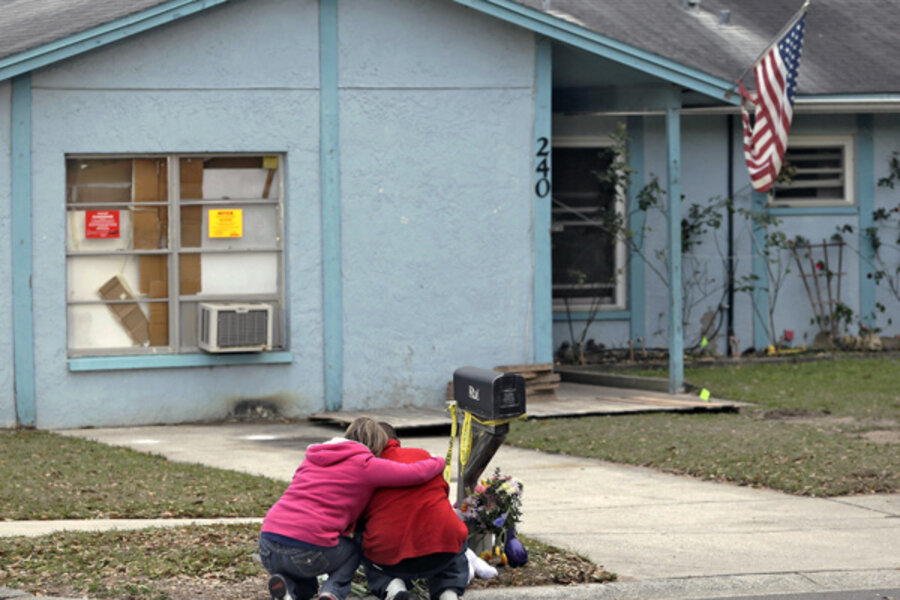First glimpse of deadly sinkhole in Florida
Loading...
Florida's Hillsborough County has made public the first footage inside the large sinkhole that cost the life of a Seffner man at midnight on Feb. 28.
The 54-second video, according to the local ABC-TV affiliate, was recorded hours after the hole swallowed Jeff Bush as he was sleeping in his bedroom.
Taken with a tiny camera mounted to a pole and passed through Jeff's bedroom window, the footage provides the clearest view of the sinkhole that officials estimate eventually grew to be 60 feet deep.
It shows that the walls and ceiling in Jeff's bedroom remained standing, while much of the floor collapsed into the crater.
Speaking to Bay News 9, Jeff's brother said the video helps him understand why rescuers were unable to recover the victim's body.
"It'll help people understand what was going on and what the county saw that everybody else couldn't see," said Jeremy, who in desperation jumped into the sinkhole to try to save his brother.
Engineers who worked on the sinkhole, told ABCActionNews that, at that time, the sinkhole became fiercely steep, incredibly unstable, and too risky for anyone to jump in and try to save Jeff.
Jeff's family members were struck by the footage.
"It looks totally different than what we saw then," Rachel Wicker, Jeff's sister-in-law, told ABCActionNews. Rachel said when she and her family ran to Jeff's bedroom, "all we've seen was a big hole. And Jeff has gone."
"You can't even see his bed," Jeremy said to Bay News 9. "It looks totally different than from when I seen it. It's much deeper. Like I said, you can't see anything that was in there, than what I seen before when I first jumped in," added Jeremy, who was pulled out of the sinkhole by a Hillsborough County sheriff's deputy.
Hillsborough County officials said it was too dangerous to recover Jeff's body. Instead, the pit was filled in and the home was demolished.
The two houses adjacent to the sinkhole were evacuated as well, because the ground was thought to be unstable. Officials said soil samples taken in the neighborhood have deemed the rest of the street safe.
Sinkholes are an increasingly deadly risk in Florida, due primarily to the region's geology, Marc Lallanilla wrote on LiveScience in early March:
The state is largely underlain by porous limestone, which can hold immense amounts of water in underground aquifers. As groundwater slowly flows through the limestone, it forms a landscape called karst, known for features like caves, springs and sinkholes.
The water in aquifers also exerts pressure on the limestone and helps to stabilize the overlying surface layer, usually clay, silt and sand in Florida. Sinkholes form when that layer of surface material caves in.








